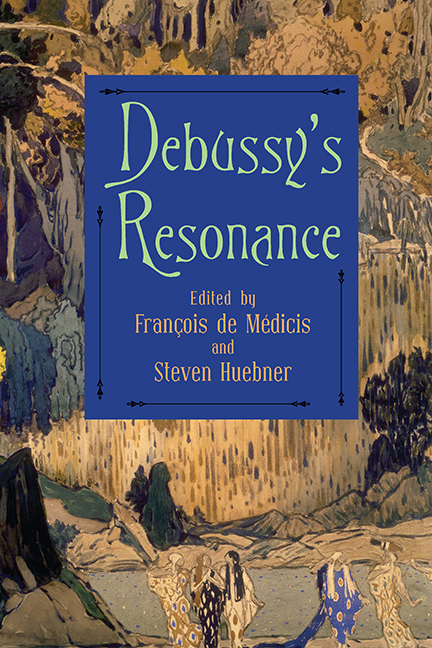Book contents
- Frontmatter
- Contents
- List of Illustrations
- Acknowledgments
- List of Abbreviations
- Introduction
- Part One Historiographical and Editorial Issues
- Part Two Style and Genre
- Part Three History and Hermeneutics
- 10 Debussy and Japanese Prints
- 11 “Les sons … tournent”: Debussy, the Waltz, and Embodied Hermeneutics
- 12 Secrets and Lies, or the Truth About Pelléas
- 13 Vertige!: Debussy, Mallarmé, and the Edge of Language
- Part Four Theoretical Issues
- Part Five Performance and Reception
- List of Contributors
- Index
10 - Debussy and Japanese Prints
from Part Three - History and Hermeneutics
Published online by Cambridge University Press: 27 July 2019
- Frontmatter
- Contents
- List of Illustrations
- Acknowledgments
- List of Abbreviations
- Introduction
- Part One Historiographical and Editorial Issues
- Part Two Style and Genre
- Part Three History and Hermeneutics
- 10 Debussy and Japanese Prints
- 11 “Les sons … tournent”: Debussy, the Waltz, and Embodied Hermeneutics
- 12 Secrets and Lies, or the Truth About Pelléas
- 13 Vertige!: Debussy, Mallarmé, and the Edge of Language
- Part Four Theoretical Issues
- Part Five Performance and Reception
- List of Contributors
- Index
Summary
The influence of Asian art on Debussy has stimulated much discussion and the issue has been explored in several studies. Much ink has been spilled about the composer's encounters with Javanese music and the gamelan at the 1889 World's Fair, as well as the music at the Annamite theater. Like Jean- Michel Nectoux, I feel that it is important to contextualize the significance of the influence of non-European music on Debussy's oeuvre, while casting doubt on the position taken by Robert Godet, who, in declaring the composer's skill as entirely independent from any influence, wrote in 1926: “admiration for things Japanese did not in any way affect the substance of his music.” Admittedly, although Debussy used certain timbral, harmonic, and rhythmic effects that evoke an Asian sound world, he carefully avoided wholesale integration of these, which would have created a somewhat artificial kind of musical authenticity.
Like many of his contemporaries, Debussy was particularly interested in japonisme, which swept across Europe from the mid-nineteenth century and culminated around 1900. Debussy scholars have consequently highlighted this engagement. Roy Howat, for example, has established a connection between Debussy's apparent preoccupation with formal proportions in La mer and the balance of visual elements in Hokusai's famous print. My objective here is twofold. First, I wish to call attention to the complex constellation of knowledge about Japanese and Chinese art with which Debussy engaged through an analysis of his relationships with acquaintances, along with information culled from biographical documents. Second, I would like to explore artistic homologies between the composer and Japanese painters in greater depth by drawing on certain technical elements of Chinese drawings and Japanese prints. Debussy's attraction to japonisme was far from unique; nevertheless, the originality and singularity of borrowings from Far Eastern art that characterize many of his works have had an important impact. Therefore, I will seek to delve more deeply into Debussy's engagement with japonisme and, in doing so, offer new perspectives on the many musicians who were profoundly influenced by Asian art during this period.
I begin with the conclusion of Jean-Michel Nectoux's chapter on the relationship between Debussy and Asian art, fittingly titled, “Connaissance de L'est” (Knowledge of the East), a clear reference to Paul Claudel's book.
- Type
- Chapter
- Information
- Debussy's Resonance , pp. 301 - 325Publisher: Boydell & BrewerPrint publication year: 2018



